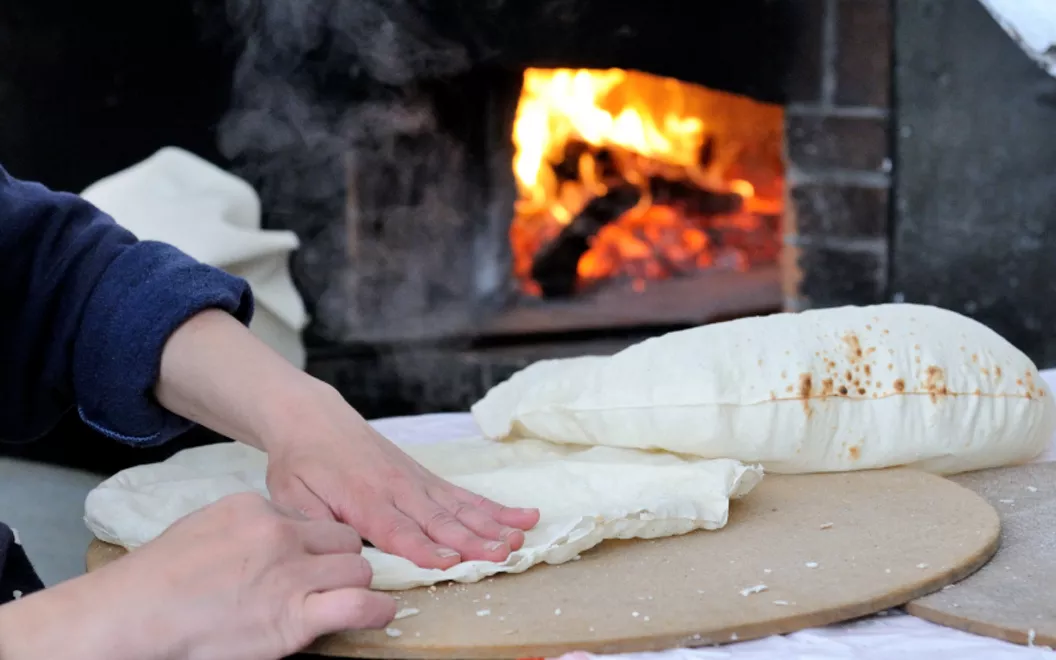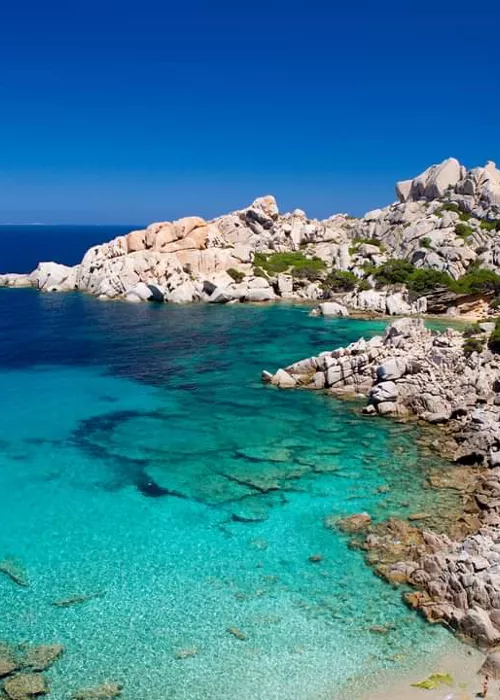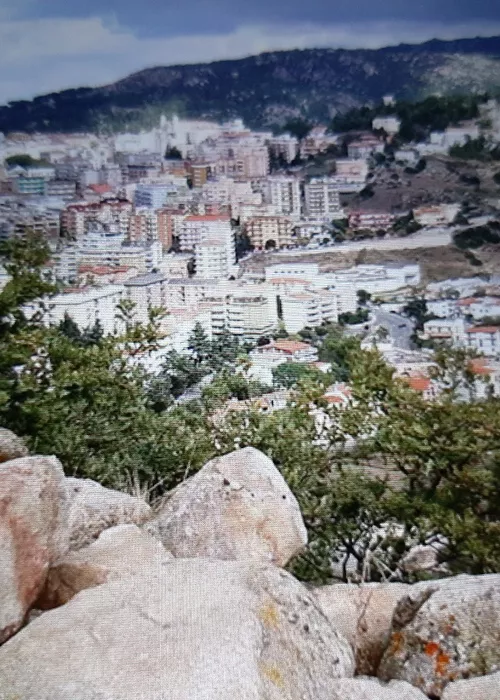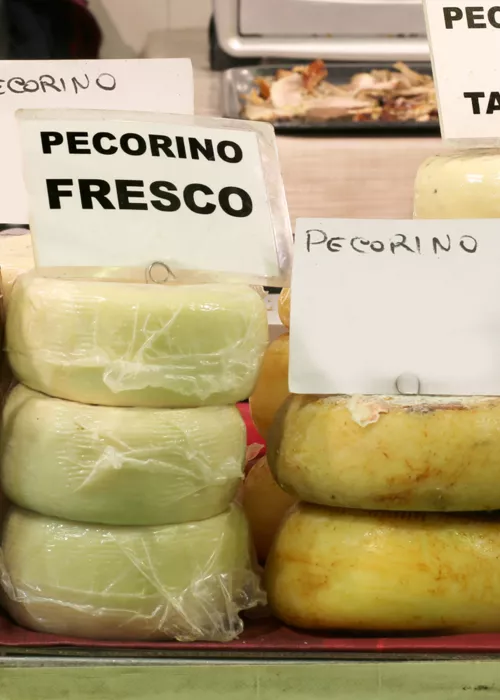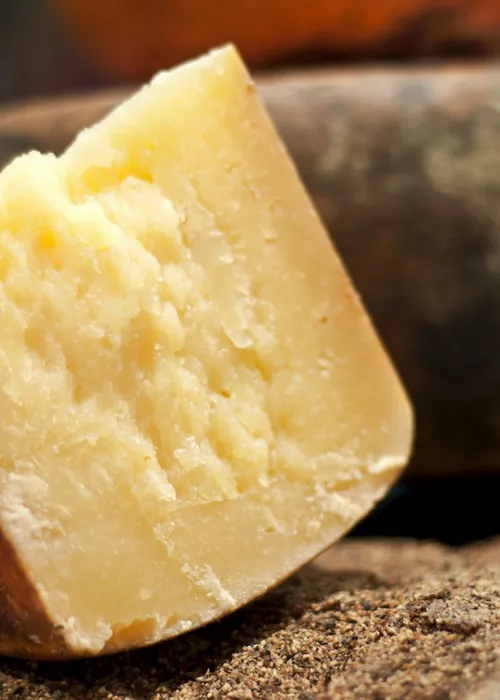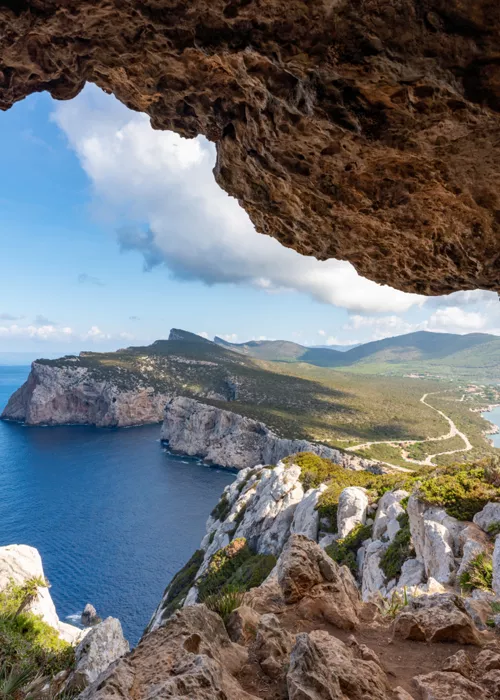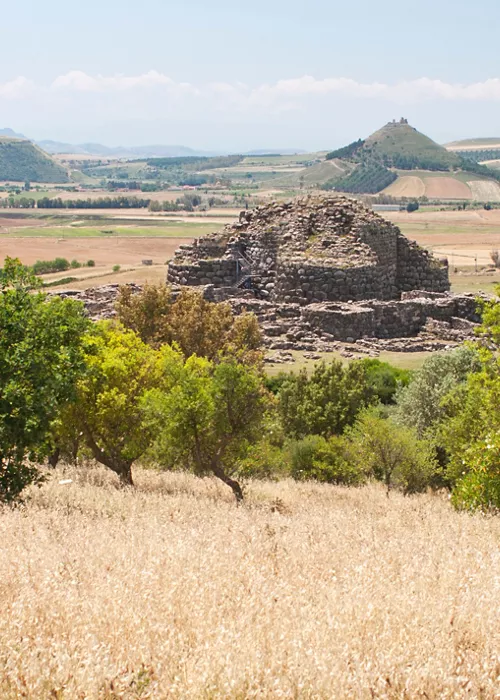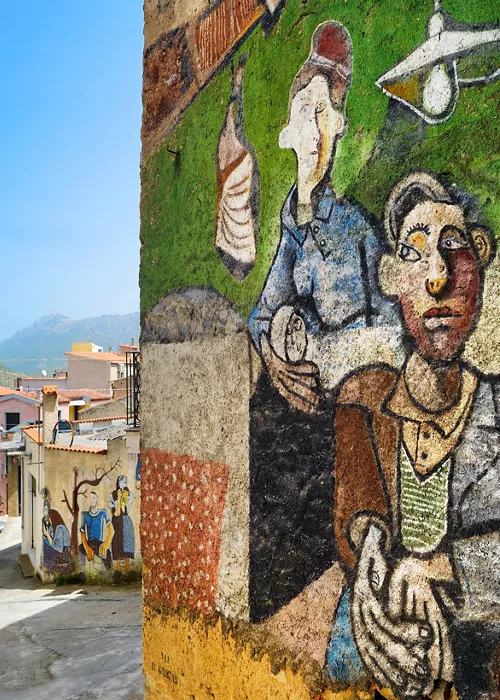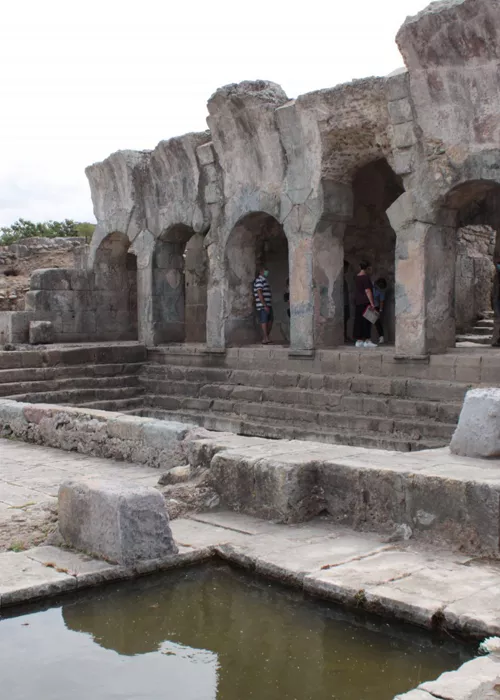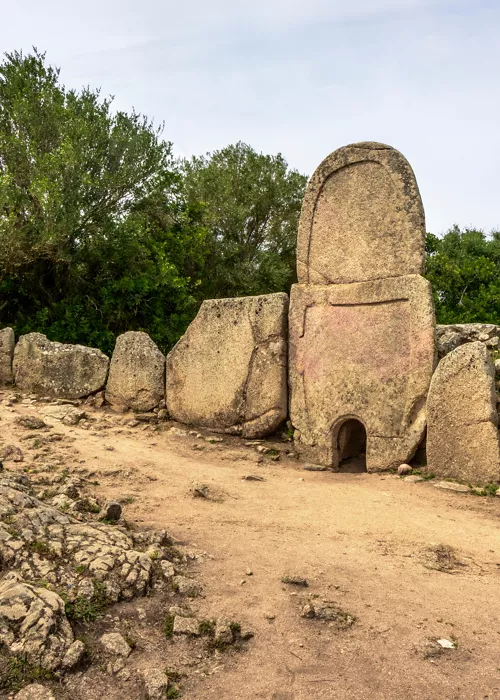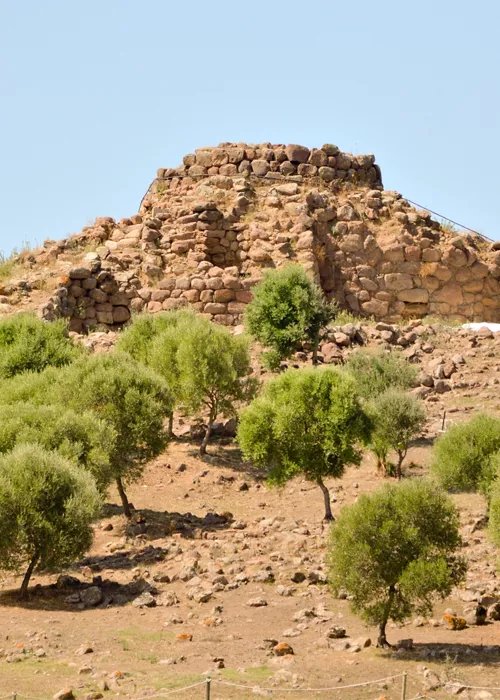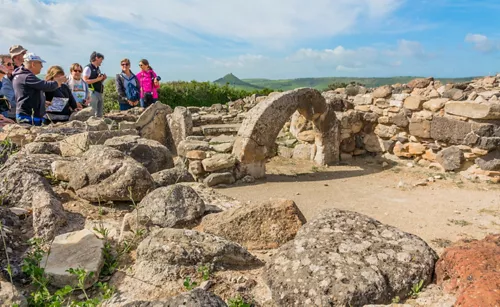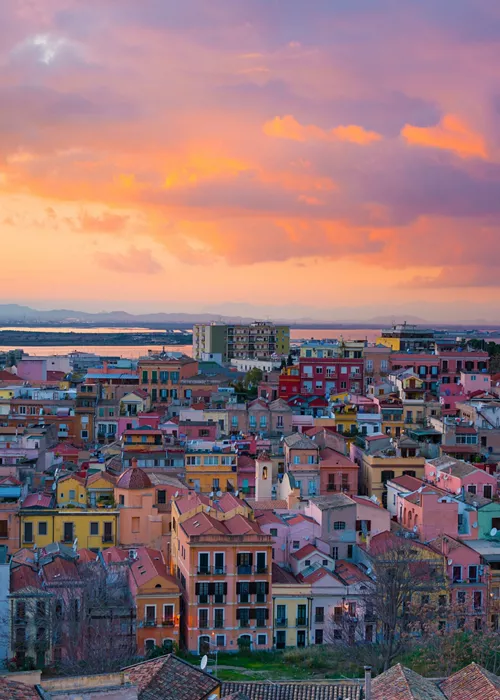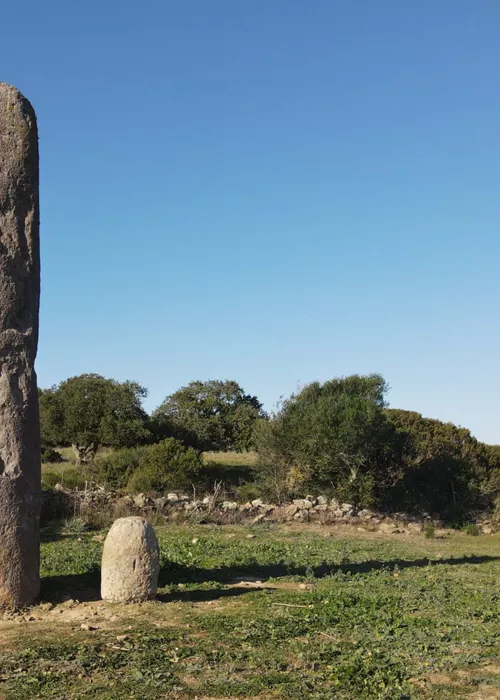The aroma of bread and tradition: the art of bread-making in Sardinia
4 minutes
Bread has been made this way in Sardinia since the dawn of time: durum wheat flour kneaded by hand with water and salt followed by a slow leavening process with a starter before the bread is finally baked in a wood-fired oven. The same actions and ingredi
Thanks to the many bread museums scattered around the island, you can find out all about the history of bread-making in Sardinia. These include museums in Arzachena, Borore, Monteleone Roccadoria, Pompu, Sanluri, Siddi and Olmedo, where a bread nativity scene is set up every year.
Rituals unchanged over time and su frammentu
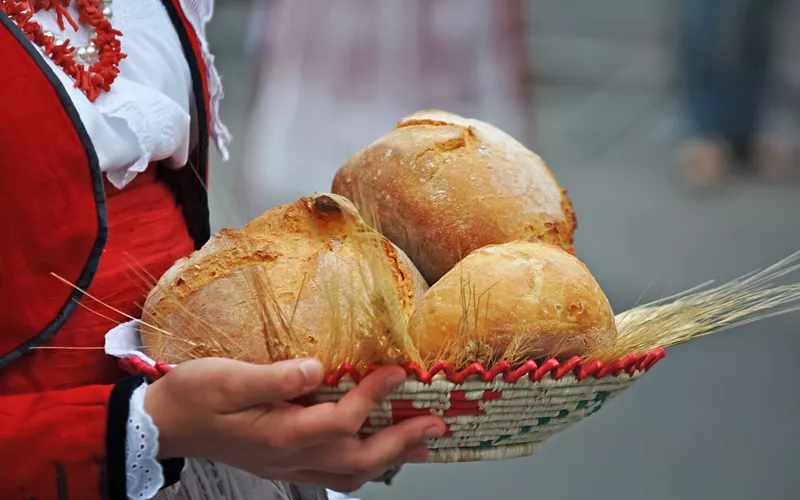
In the past , bread-making took place periodically, depending on the needs and economic standing of the families in question. The bread was made by the women of the family, following procedures that have become traditions over time.
On feast days and anniversaries, it was time for special breads, made with a process that became a community ritual because it involved the mistress of the house and all the women of the family and neighbourhood.
The work began at dawn and consisted of several stages: preparing the dough, making the moulds and baking the bread were entrusted to three groups of women, but decorating the bread was for those with expert skills.
Even today, bread-making respects these traditions and the essential ingredient remains the starter, called frammentu or madrighe.
The different shapes of bread: thinner and crispier
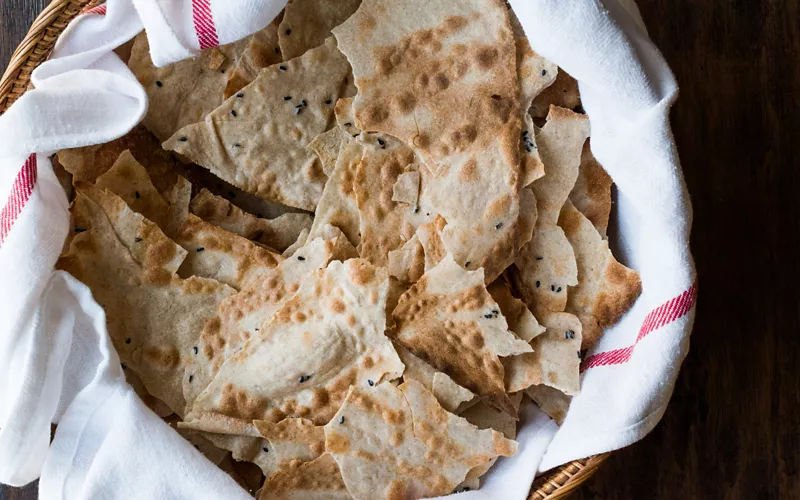
Every town in Sardinia prepares bread in its own way, with specific shapes and characteristics. This is an island where everything changes depending on where you are, even the simplest food.
Typical of the Barbagia region are the very thin, round discs of bread called carasau, also known as carta da musica or music paper because they seem to emit musical sounds. The long shelf life of this crispy dough, designed to make it easier for shepherds on transhumance during their prolonged absence from home, comes from its double baking.
Guttiau and frattau: delicious variations
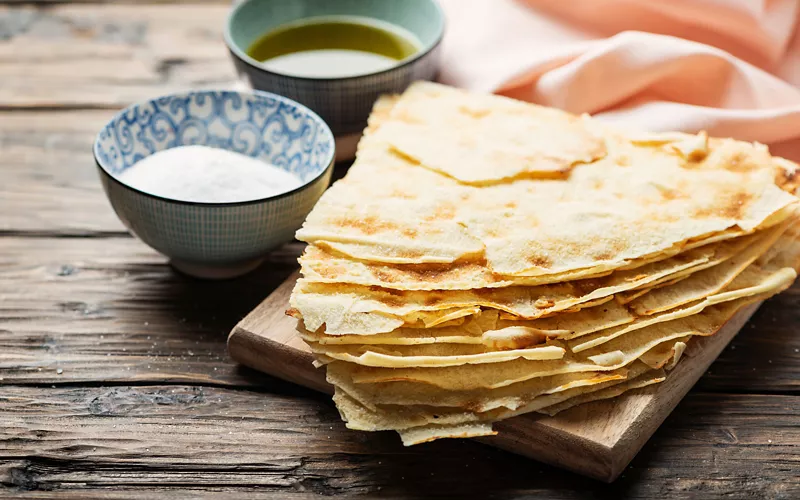
A tasty variation is guttiau, lightly toasted with oil and salt.
In Ollolai it is called pane ’ine, and both the thickness and the diameter of the sheets of bread vary.
In Orani and other Barbagia villages, it is softer and folded in on itself, so is referred to as pane lentu or modde.
In Mamoiada, the dough is softened by the addition of potatoes.
A typical starter made with carasau is pane frattau: here, the sheets of bread are arranged in layers and soaked in hot broth, then topped with tomato sauce with plenty of pecorino cheese and a poached egg.
Su pistoccu and spianata
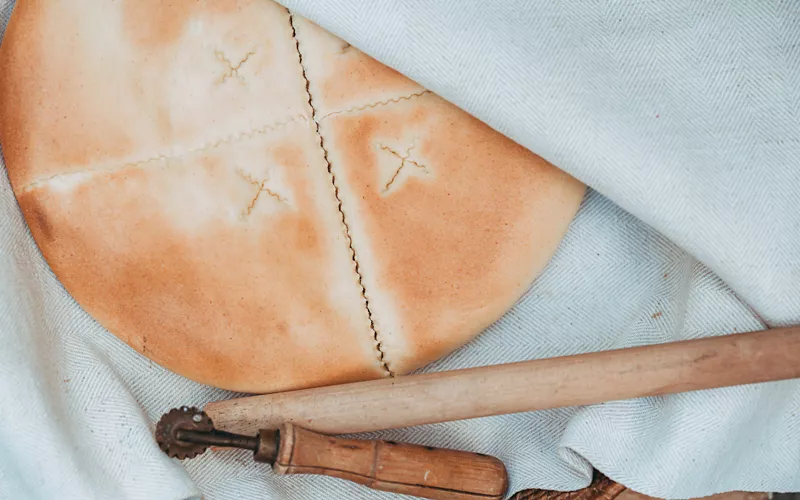
Typical of Ogliastra are the small, thick rectangular sheets of su pistoccu, a hard bread in sheets that remains unchanged even months after its double baking.
It is one of the oldest breads made in the land of the centenarians, and is also widespread on the opposite side of the island, in Montiferru, Marghine and Planargia.
Its main ingredients are semolina and durum wheat flour, water, salt and yeast. The skilful hands of housewives give it different shapes and thicknesses depending on where it is made, with rustic aromas and flavours of the past.
Su pistoccu can be eaten dry or softened with water, and can be accompanied by ham, pancetta, guanciale or pecorino cheese.
Another fine bread that is much softer is spianata. This is typical of Ozieri, but has some variations: in Busachi and Bonorva it is called su zichi, while in Logudoro it is known as sa fresa.
In any case, it comes in the form of a thin, round flatbread that is baked twice in a very hot oven.
The famous dish suppa cuata, which is typical of Gallura, is also made with spianata.
Civraxu flatbreads and festive bread
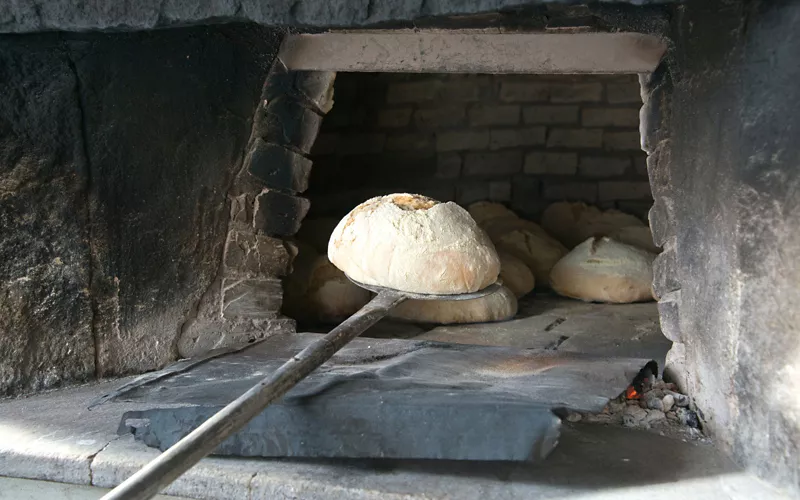
Even more delicious freshly baked, civraxiu flatbreads, typical of the Campidano region, owe their name to the Latin “cibarius”, a food par excellence. According to the father of Sardinian archaeology Giovanni Lilliu, these were already customary at the end of the 18th century.
This is the most widespread type of everyday bread in southern Sardinia, of which Sanluri is the elective centre, and in some villages, it is eaten in a smaller version called su moddixi or moddizzosu: “Sunday” or “holiday bread”.
Another variant, also small, but made with dark flour, is su pani nieddu, which was eaten mainly by peasants and was considered the bread of the poor. This is a bread that is not only found in southern Sardinia, but is also produced under the name pane tundu in Thiesi, Logudoro, an area where the thinner, longer, perforated bread known as pane segadu is typical.
Another delicacy to be eaten fresh is sa costedda, similar to civraxiu and made from flour leavened with su frummentu.
There are also special filled breads that derive from sa costedda and are stuffed with ricotta cheese, sultanas, olives and tomato. Pan'e gherda with pork crackling, a delicious speciality of the Nuoro area, deserves its own category.
Su coccoi: the festive bread
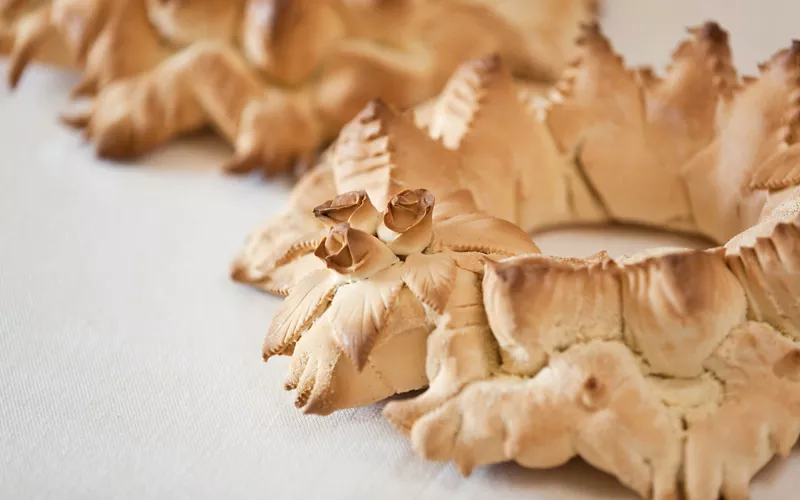
Su coccoi is the excellent special bread that is consumed on festive occasions.
It is prepared with semolina, so much so that it is known as sa simbula in Fordongianus and Urzulei.
From this bread comes the rich heritage of decorated breads, some used for religious celebrations such as su pane e sposos (bread of the bride and groom). Is coccois pintaus (painted breads) are typically seen at festivals and come in various forms, but the best known are decorated with leaves and were once the daily food of rich families. Also common are decorations with pictures of fruit, bouquets of flowers or roses, fish, birds and turtles.
A particular speciality is su coccoi cun s'ou, bread made with fine semolina with a hard-boiled egg, which is used exclusively for Easter festivities. Su candelariu is a fine New Year's Eve bread, while sas coccas are flatbreads made in the Nuoro area for the holiday on 15 August. Last but not least, su maritzosu is another bread for special occasions.
Are you feeling hungry yet?

